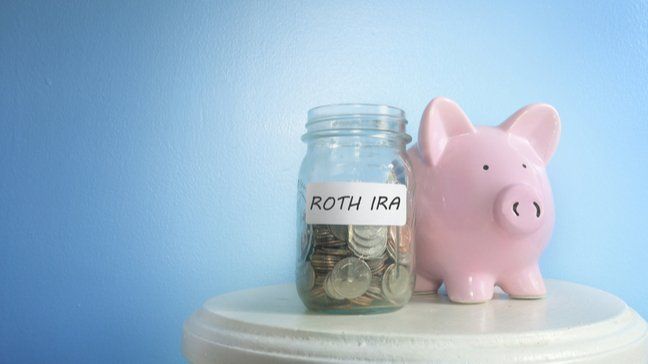
It’s literally never too early to start saving for retirement, which is why brokerages offer Roth individual retirement accounts (IRAs) for kids under 18.
The only requirement for opening one of these “custodial Roth IRAs” is that the child must have “earned income” to contribute to the fund. For kids, that can mean earnings from babysitting, mowing lawns, selling lemonade, or getting a job with a pay stub. Allowances and money from investments don’t count. Only the money the child earns can be contributed – either by that child or by someone on their behalf.
Since there’s no age restriction on Roth IRA accounts, families can use them to help kids get a head start on both retirement savings and wealth-building goals. Not only is it an opportunity for parents and children to talk about saving and investing, but the money potentially benefits from decades of tax-free growth.
Having a Roth IRA is “a gift of financial literacy, an incentive to work and learn how the world works,” says Joshua Lieberman, partner at insurance and wealth management firm Lenox Advisors.
Why is starting a Roth IRA so early valuable?
Compound growth. This uses time to make money grow faster, thanks to a snowball effect.
How it works: Your initial investment earns interest, which is added to your balance at the end of the month. Next month, both your initial investment and the interest you earned last month earn interest, and so on.
The original investments plus the income earned from those investments grow together. Even if you save a small amount but have the benefit of time, your balance can grow significantly. The longer your money is invested, the more growth potential it has.
Financial advisers use the Rule of 72 (divide 72 by your rate of return) to get the number of years it will take your money to double. For example, if your rate of return is 6%, then your money should double every 12 years (72 divided by 6) because of compounding.
“Compounding’s one of the most powerful forces in the universe,” says Max Jaffe, certified public accountant and chartered retirement planning counselor at TBS Retirement Planning.
How old do you have to be to have a Roth IRA?
At Fidelity, the average age of the child when an account is opened is 13.7 years, and the average balance is around $2,700. However, an adult can open a Roth IRA for kids of any age, even zero.
“Even a 9-month-old baby who participated in a photo shoot and got paid can have an IRA,” Kelly Lannan, Fidelity senior vice president of emerging customers, says. “It’s more about earned income than age.”
What do I need to do to avoid IRS issues?
If your child receives a pay stub or W-2 summary of wages, you can collect those like you would your own for tax purposes.
If your child receives cash without any documentation, make sure you record each time your child gets paid, how much is received and what was the work.
“We generally recommend something like an Excel (spreadsheet), but there isn’t any one method dictated by the IRS,” Lannan said, noting a handwritten log in a notebook or calendar is probably OK too. “This would also only be necessary if you were audited.”
Convincing a child to hand over hard-earned cash for a Roth IRA may be challenging, so an adult can make contributions as gifts to reward the child for working or the child can contribute a portion of the earnings to the Roth IRA and you match that amount. Just make sure the total contribution isn’t more than the child’s earnings or more than the Roth IRA cap of $6,500 in 2023.
How does the Roth IRA work?
Once you know the ground rules for the youth Roth IRA, the account works pretty much like any other Roth IRA.
In 2023, contributions are capped at $6,500 and are made with after-tax money, meaning there aren’t any upfront tax breaks but withdrawals after age 59-½ are tax-free and penalty-free if the money’s been held in the account for at least five years.
If you need cash sooner, contributions (not earnings) can always be withdrawn tax-free and penalty-free if the account’s been open for at least five years. Earnings may avoid tax if you use the money to buy your first home or become disabled or dies.
Does my child control the account?
No, the custodian maintains control of the child’s Roth IRA, including decisions about contributions, investments, and distributions. Statements are also sent to the custodian.
However, the minor ultimately owns the account so the funds must be used to benefit the child. When the minor reaches a certain required age, typically either 18 or 21 in most states, the assets must be transferred to a new account in their name, and the child gains full control of the account.
Hopefully, by then, you will have had discussions with your child about saving and investing for retirement and can prudently manage the account.
“We hope these kinds of accounts help drive money conversations between parents and kids,” Lannan says.